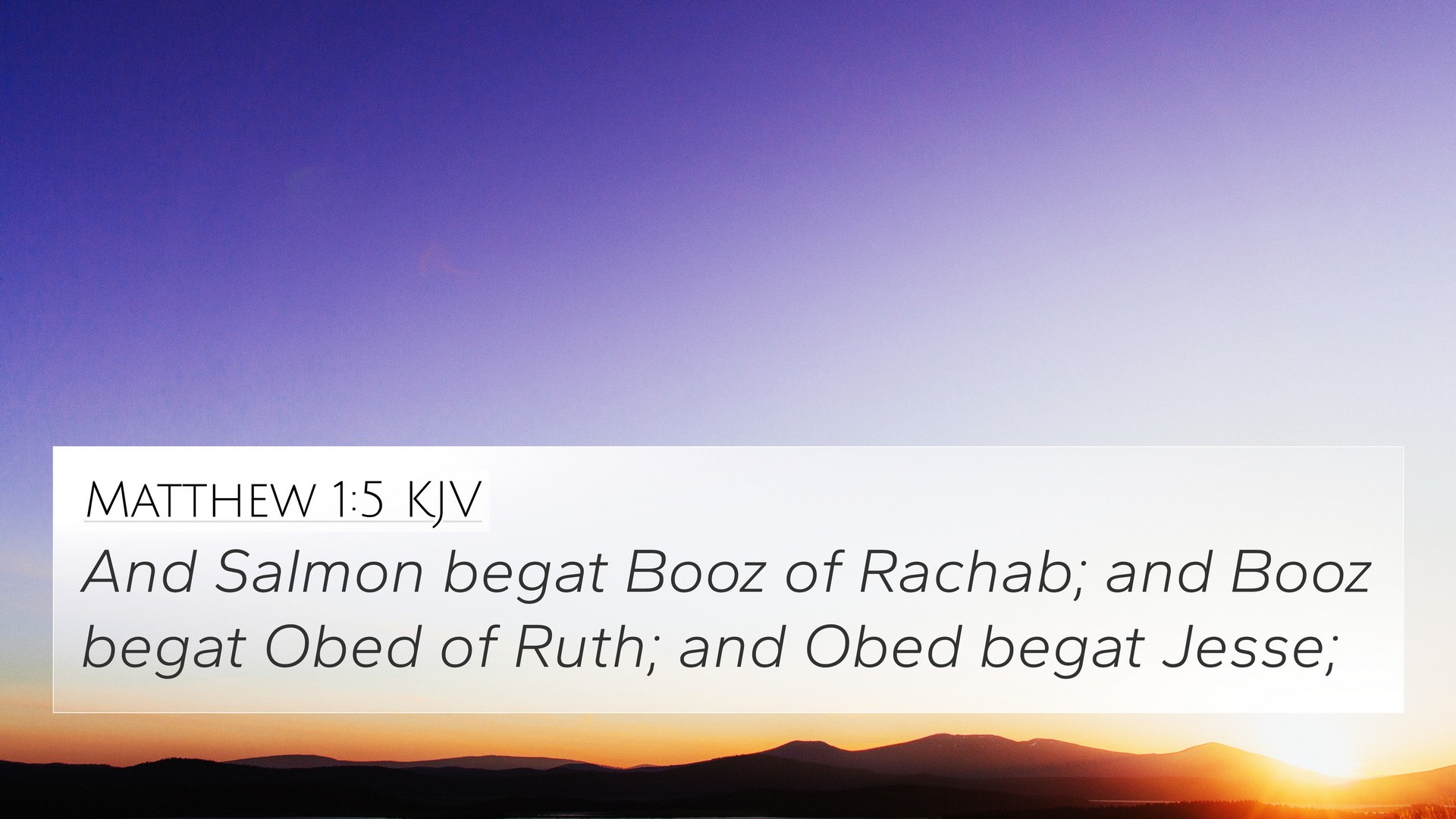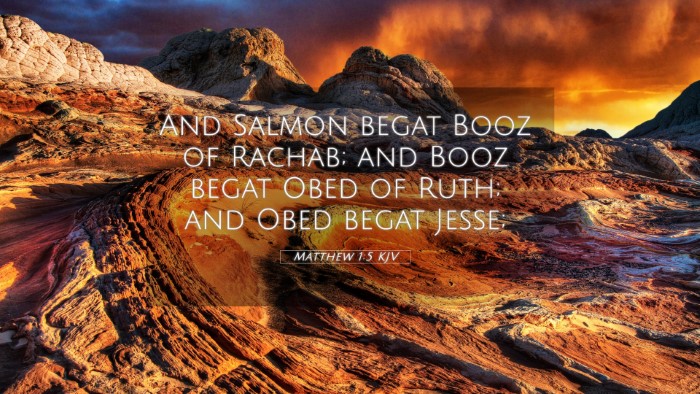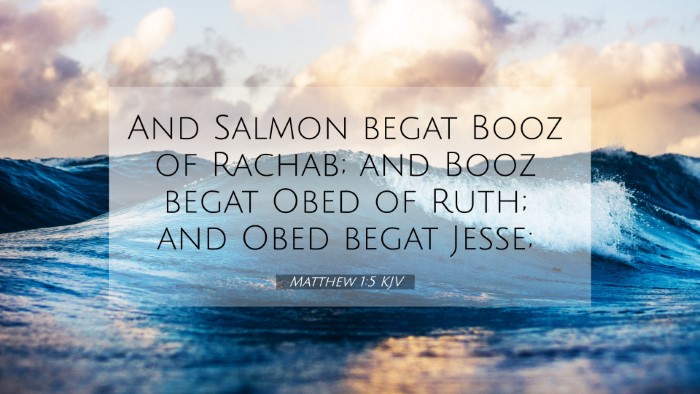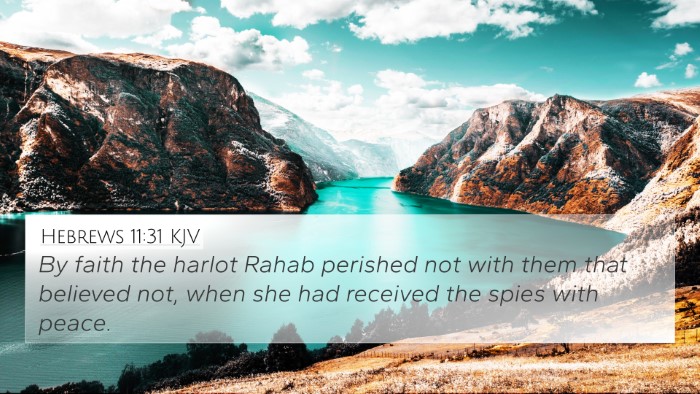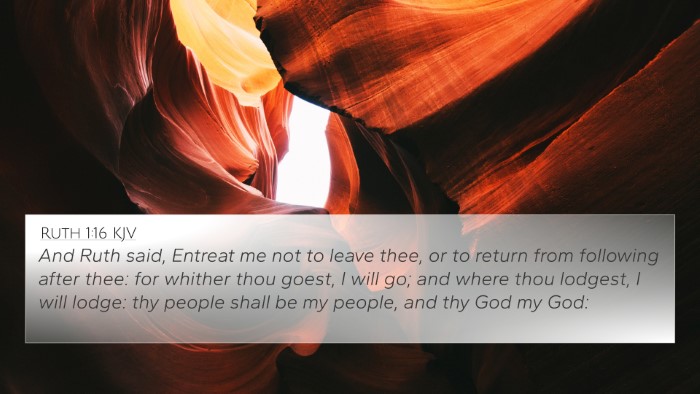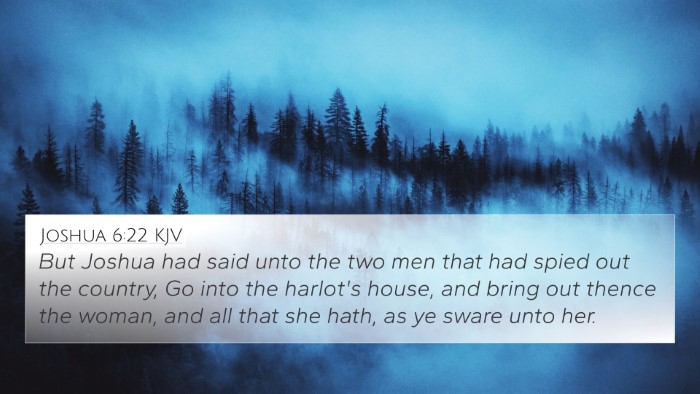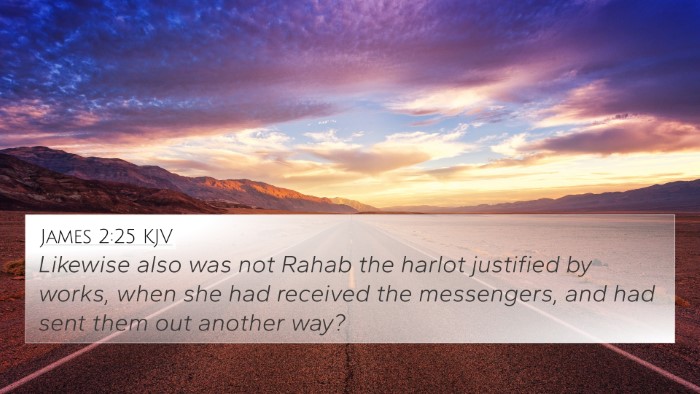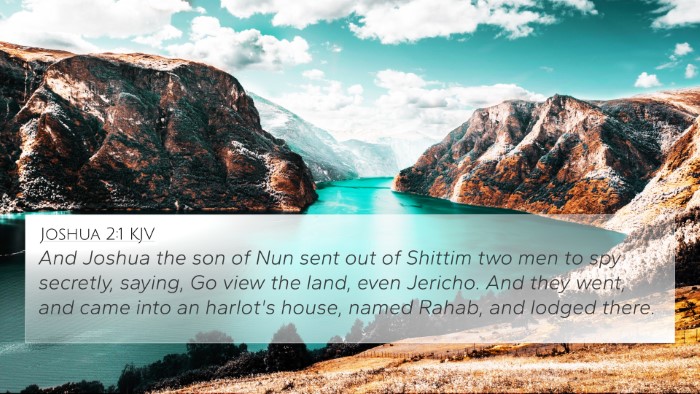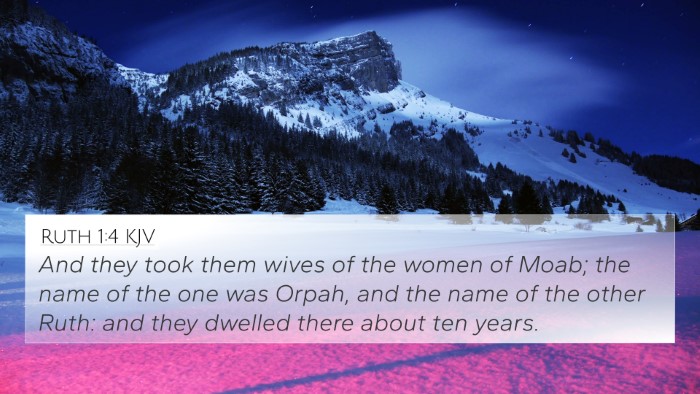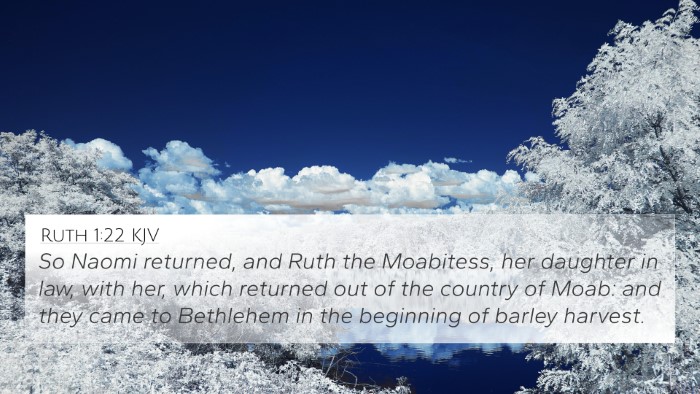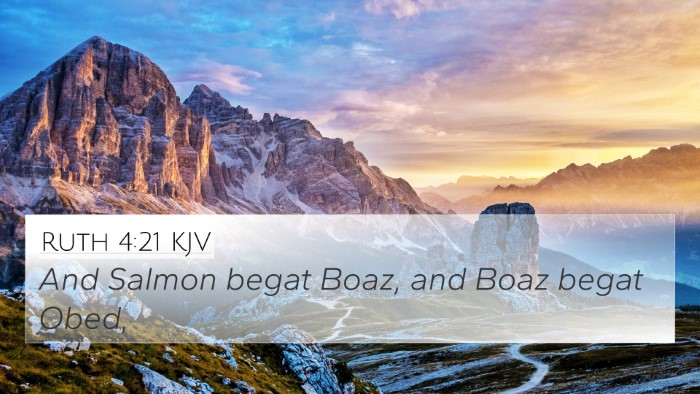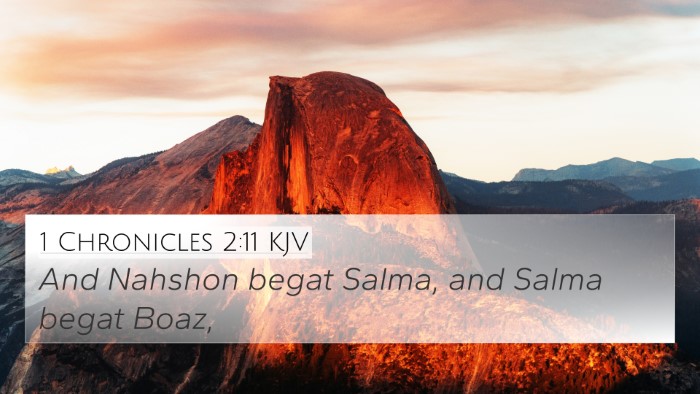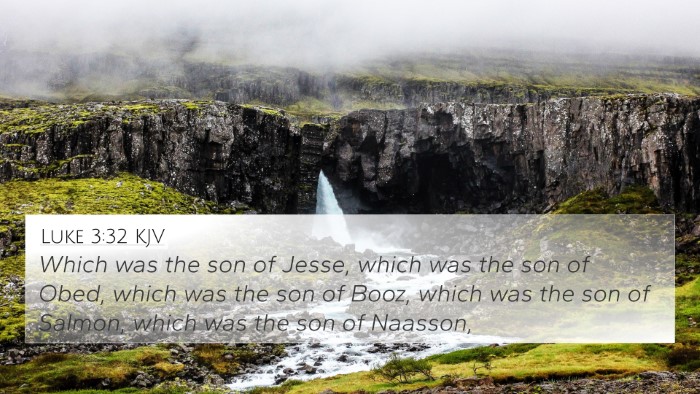Understanding Matthew 1:5
Matthew 1:5 reads, "And Salmon begat Booz of Rachab; and Booz begat Obed of Ruth; and Obed begat Jesse."
This verse is part of the genealogy of Jesus Christ, demonstrating a series of important connections within the lineage of the Messiah. The verse illustrates not only the ancestry of Jesus but also highlights significant women and Gentiles included in this lineage.
Key Themes in Matthew 1:5
- Inclusion of Women in Genealogy: The mention of Rachab (Rahab) and Ruth stands out, as it reflects God's grace and the breaking of social norms.
- Significance of Names: Understanding the characters in this lineage provides insights into the overarching narrative of God’s plan for redemption.
- Covenant and Faithfulness: This genealogy underscores God's faithfulness in fulfilling His promises through generations.
Commentary Insights
Matthew Henry emphasizes the importance of tracing the lineage of Christ to validate His rightful claim to the throne of David. He points out that God often chooses unexpected individuals to fulfill His divine purposes. The inclusion of Rahab, a former Canaanite harlot, and Ruth, a Moabite, exemplifies the expansion of God's grace beyond Israel.
Albert Barnes notes the importance of Rahab’s faith as a key element in her inclusion in the genealogy. Despite her past, her actions in assisting the Israelites led to her recognition in the lineage of Christ. Ruth, a Moabite, further illustrates God's love and plan extending to all nations, highlighting a theme of redemption.
Adam Clarke elaborates on the cultural implications of these inclusions. He points out the theological implications of including Gentiles in the heritage of Israel, which foreshadows the advent of the Gospel to all peoples through Jesus. Clarke also remarks on the significance of Jesse, as he is associated with the establishment of the Davidic line.
Cross-References for Matthew 1:5
This verse connects with several other Biblical texts, enhancing its understanding through cross-referencing:
- Hebrews 11:31 - Highlights Rahab's faith as crucial for her salvation and that of her family.
- Ruth 1:16 - Ruth’s declaration of loyalty to Naomi illustrates her character and role in the genealogy.
- 2 Samuel 7:12-16 - God's covenant with David assures that his lineage will endure forever, ultimately fulfilled in Christ.
- Isaiah 11:1 - Prophecies concerning the Davidic branch that springs forth from Jesse, linking Jesus to Old Testament expectations.
- Matthew 1:1 - The introduction of the genealogy of Jesus emphasizes His identity as the Son of David.
- Luke 3:32 - A parallel genealogy that also connects to David, reinforcing Jesus' royal lineage.
- Luke 4:25-27 - Jesus references Elijah and Elisha's ministry to Gentiles, indicating God's wider plan beyond Israel.
Cross-Referencing in Bible Study
Understanding Matthew 1:5 in context involves examining its connections with the broader scriptural narrative. Cross-referencing Biblical texts helps one see how different scriptures illuminate one another, creating a rich tapestry of meaning. When studying this verse:
- Utilize a Bible concordance to identify key terms and people involved in the genealogy.
- Engage in detailed cross-reference studies to explore how the inclusion of women and Gentiles supports central Biblical themes of grace and redemption.
- Consider thematic Bible verse connections such as faith, redemption, and God's faithfulness throughout the scriptures.
Final Thoughts
Matthew 1:5 serves as a powerful reminder of God's inclusive nature and His sovereignty over history. By incorporating figures like Rahab and Ruth, it emphasizes that God's plan transcends ethnic boundaries and societal norms. As scholars and believers, delving into these connections enriches our understanding of the Gospel and its implications through Bible verse parallels and scriptural cross-referencing.
